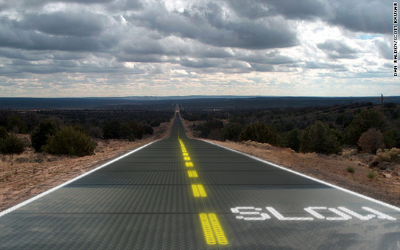The World's Smartest Ghost Town
/Something big is about to happen down in the desert of southern New Mexico: a billion dollars’ worth of construction. That’s how much Pegasus Global Holdings expects to spend building a new city from scratch in the dry expanse between White Sands National Monument and the Mexican border.
But while it will sprawl over 15 square miles and have all the working infrastructure to support a population of 35,000, this city won’t become home to humans. Instead it will serve as the globe’s largest laboratory, a life-size model of urban, suburban, and rural living where researchers can test cutting-edge technology without disrupting anyone’s daily life.
Pegasus’ design includes high-rises, highways, suburban sprawl—even churches and an airport
This is CITE, the Center for Innovation, Testing and Evaluation, and if all goes well it could break ground this year and go to work in 2018. It’ll be privately funded and self-sustaining as a facility-for-hire, but the state of New Mexico has offered official “advice and guidance” via a Memorandum of Understanding drafted with the Department of Economic Development. After all, Pegasus promises CITE will create nearly 4,000 jobs directly and indirectly by bringing years of research activity to the Southwest.
Not that New Mexico is any stranger to hosting scientists. All this flat, dry, stable land has long been regarded as ideal for testing everything from solar energy to army ordnance, and the 1945 Trinity nuclear test some hundred miles north of CITE’s future location was just the beginning. Government and academic researchers are already busy across the state at facilities like the White Sands Missile Range, Los Alamos National Laboratories, the University of New Mexico, and Sandia National Laboratories. So why build yet another research center?
CITE will serve as a stepping stone in the R&D process of the future, allowing new technologies to emerge from pristine and tightly-controlled labs to test real-world conditions like dusty roads, faded signage, and complex layers of architecture. Real-world minus pedestrians, of course—if something goes awry with a remote control network or other high-risk, high-power systems, no one wants civilian casualties.
So what kind of tests are we talking here?
The sky’s the limit, but Pegasus managing director Bob Brumley is hoping to attract contracts from the biggest names in cutting-edge tech. Last year he told WIRED that CITE “would be a great place where someone like Jeff Bezos or Elon Musk could test something at scale before bringing [it] into the marketplace.” Something like...
- Fleets of self-driving vehicles beyond Google’s cute little passenger car, from freight trucks to delivery drones
- Traffic management systems controlled by artificial intelligence
- High-tech road surfaces that respond to weather conditions or to vehicles
- Energy-saving smart grid technology
- Otherwise unlicensed energy production like thorium nuclear reactors
Pegasus boasts that they’re approved as a prime contractor by the U.S. Defense Contract Management Agency, Defense Contract Audit Agency, and the Naval Sea Systems Command, opening CITE to a slew of potential military testing as well. An empty city loaded with sensors would make a perfect staging ground for simulated attacks on the street or in the plumbing, electrical, or telecom systems.
When it comes to tests like that, a little bit of Nimbyism seems warranted: no smart-armies of flying super-robots learning to navigate human streets in my backyard, thanks. Feel free to keep that out in the desert.
Of course, even the desert is someone’s backyard, and CITE will be built near enough to Las Cruces and Deming to allow a workforce to commute to and from civilization daily. How will this outsized science center affect the lives of residents nearby, or the lives of civilians and customers in the future? Only time will tell, so we’ll have to stay tuned as CITE launches later this year.
This post was brought to you by Machine Design, CNN, and Pegasus Global Holdings (which only vaguely reminds me of Veridian Dynamics).




